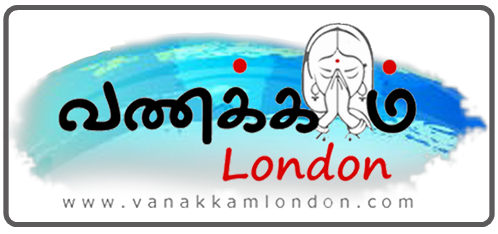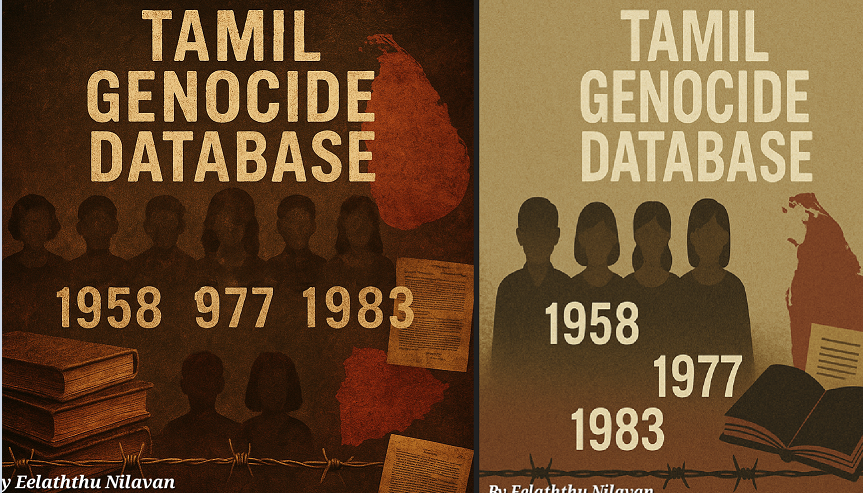■.The Holocaust Database: A Model of Memory and Justice
The Yad Vashem Holocaust Memorial in Israel and the United States Holocaust Memorial Museum in Washington D.C. serve as living repositories of memory for over six million Jews exterminated by the Nazi regime between 1941 and 1945. The Holocaust—intended by Nazi Germany as the total annihilation of the Jewish people—was executed with ruthless efficiency, using gas chambers, firing squads, forced starvation, and death marches.
These databases do more than count the dead; they humanize each victim, documenting their names, places of birth, professions, and personal stories. Though the total number of Jewish victims is estimated to be six million, only 4.9 million have been identified by name as of 2024. This partial but powerful documentation forms a direct challenge to denialism, historical erasure, and political manipulation.
■.The Urgent Need for a Tamil Genocide Database
Fifteen years after the end of the Sri Lankan civil war, no complete, permanent, and publicly accessible database has been created to document the victims of the genocide committed against the Tamil people. While several efforts have attempted partial listings or anecdotal collections, there is no structured, transparent, and scalable digital database available for global access and legal utility.
This absence undermines Tamil efforts for truth, justice, and historical recognition. The names and stories of tens of thousands of Tamil civilians killed during the final months of the war in 2009, many of them in officially declared “No Fire Zones”, remain largely unrecorded. Likewise, the victims of state-orchestrated pogroms in 1958, 1977, and 1983—which were foundational to the structural genocide of Tamils—have not been systematically archived.
A robust database would:
Record each victim’s name, age, village, occupation, and circumstance of death.
Include visual documentation, family testimonies, forensic reports, and human rights findings.
Serve as a reference for international courts, UN inquiries, and transitional justice processes.
Enable Tamils around the world to grieve with dignity, seek justice, and remember collectively.
■.Why It Matters
● For Justice
International justice systems demand evidence-based documentation. Without names, dates, and data, no genocide narrative can achieve formal recognition in legal forums.
● For Historical Continuity
Memory fades. Politics distorts. A genocide database becomes a bulwark against historical denial, securing the Tamil people’s narrative in global consciousness.
● For International Solidarity
The database would serve as a reference point for human rights organizations, lawmakers, and diaspora allies, solidifying the legitimacy of Tamil claims for justice.
● For Families and Communities
Documenting each death brings emotional closure, public acknowledgment, and social dignity to survivors and descendants who live with trauma.
■.Global Human Rights Advocates Supporting Documentation Efforts
Multiple international voices and organizations have emphasized the importance of documentation:
Yasmin Sooka – Former UN war crimes investigator and Executive Director of the International Truth and Justice Project (ITJP). She has consistently called for thorough evidence-gathering and victim-centered justice for Tamil victims.
Human Rights Watch and Amnesty International – Both organizations have published extensive reports on crimes committed against Tamil civilians, particularly during the final stages of the war.
Tamils Against Genocide (TAG) – A US-based organization focusing on documenting war crimes and filing legal cases under international law, especially universal jurisdiction frameworks.
These actors, among others, have echoed the need for verifiable, people-centered databases to support legal processes.
■.The Role of the Tamil Diaspora
The Tamil diaspora, especially in Canada, the UK, Australia, and across Europe, must play a central role in building this database. These communities have access to technical expertise, financial resources, and political freedom to initiate and maintain such a project.
Existing diaspora-led remembrance efforts—such as memorial events, museums, and art installations—are vital. But they need to be complemented by a unified, open-access digital genocide database, built with international credibility and professional curation.
■.Core Features of a Tamil Genocide Database
To ensure credibility, the database should be designed with the following features:
● Victim Registry
Name, age, gender, village, family details
Date, place, and method of death
Perpetrating force (Sri Lankan military unit, paramilitary group, etc.)
● Incident Classification
Type of violence (massacre, shelling, sexual violence, forced starvation, enforced disappearance)
Connection to known military operations or command structures
● Testimonies and Evidence
Eyewitness accounts, survivor testimonies, forensic data
Medical and legal reports
Photographic and video evidence
● Geo-tagged Mapping
Interactive maps showing locations of mass graves, camps, hospitals bombed, and civilian shelters attacked
● Reports and Research
Inclusion of findings by UN panels, independent researchers, and rights bodies
● Multilingual Searchability
Publicly accessible, with interfaces in Tamil and English, allowing community input and scholarly use
■.Conclusion: Memory is Resistance
The Tamil genocide cannot be remembered only through numbers, slogans, or rituals. Every individual killed was a human being with a story, a family, and a life. Recording their names, preserving their photos, and archiving their truth is an act of resistance, remembrance, and righteous defiance.
The Jewish people built Yad Vashem.
The Armenians documented their genocide despite a century of denial.
The Rwandans built a digital memory space after unspeakable loss.
Tamils must do the same.
We owe it to those who died.
We owe it to those who live with grief.
We owe it to the generations yet to come—
so they never forget, and never forgive, without justice.
□ Eelaththu Nilavan □
16/05/2025

